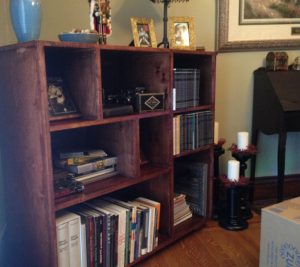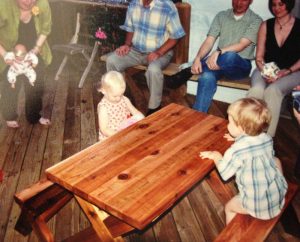Is plywood acceptable in fine furniture? And, while we’re at it, what is fine furniture? Is it furniture made only with hand tools? Is it made only with solid wood? Is it defined by certain joinery?
My answer to all those questions is, “Whatever gets the job done, has an eye-pleasing design, has well-fitting joints, is strong and has a beautiful finish.”
Of course, “eye-pleasing” is in the optical structure of the beholder. Even classic lines and traditional rules of proportion aren’t going to delight everyone.
How strong is strong? Some might be thinking, “It just needs to be strong enough to last until I move out of this apartment.” “Or the twenty years I live in this house.” Others want to be able to pass their handmade furniture down to their children, grandchildren and beyond. I read a piece recently in which a Japanese woodworker said that 100 year old furniture had barely begun its life, that it might be 200 years old before it really has character.
As for plywood, let’s face it: it’s hard to get stronger than quality plywood.
How beautiful does the finish have to be? It, too, should be durable. To some, that means varnish. To others, paint. Some might think an oil finish is durable enough, even if it has to be renewed periodically. Perhaps the beauty of the oil finish outranks the need for durability.
Can we agree that ill-fitting joints would universally take a piece out of the running for “fine?”
The bottom line? We’re all entitled to our own opinions, and to make and finish our furniture however we like. And, if we want to call it “fine,” after all, it’s our furniture and our viewpoint.

I considered this my very first foray into “fine” woodworking. Our son, Andy, wanted a cabinet to display his photography books, magazines and classic equipment. He sent me a sketch on a napkin and wanted to know if he could make it with a circular saw and hammer. I think that was his way of asking me if I would do it. I made it from furniture-grade oak veneer plywood with red oak solid wood banding. Andy wanted to finish it himself and sent me these photos when he was through.

Perhaps it’s a stretch to call a picnic table, much less a diminutive picnic table, “fine” furniture, but I intended this table to be an heirloom our eldest granddaughter would pass to her grandchildren and beyond. It’s plenty strong. There is no plywood. This was her second birthday party.


Not only should it be acceptable, it should also be a good candidate for durability and being long-lasting due to its ability to shrink and expand less.
I am also a carpenter so it does not bother me. 2. withe the table saw, router table and hand held router. 3. might do that some day.
My finest pieces are made of veneer from all over the world learning to join and properly glue fine veneers will open up an exciting and awsum world of furniture making. Fine veneers rosewood ebony are only usually available in veneer.
Good design starts with questions such as, why is the piece being made in the first place, what will its use be, and what does it need to look like. THEN you decide what materials will best suit that purpose. Sometimes plywood fits in, sometimes not.
Manufactured plywood as we now know it has been around for about 75 years. But in the past, every competent woodworker was capable of laying up a substrate and veneering over it. In other words, plywood. That’s been happening for many centuries, and many if not most of the fine furniture in museums is at least partially veneered.
1) As a secondary wood that supports the structure of the visible and visual structure. 2) Well, classically, proportioned piece; made of good stable wood; well planned; has usefulness; built with joints that will last longer than the maker; nicely finished. 3) Hand tools incorporate the mark of the maker on the wood, and when done right contribute to the “fineness”. 4) It should be solid wood, but veneered secondary (i.e., plywood) is fine for visible panels as long as it is jointed with the solid parts and not just nailed or screwed. 5) Parts that are visible, or routinely become visible, should use classic joinery forms. Nails and screws have a place in furniture making, but not so much in fine furniture making. They cause stress points and easily become loose, they are acceptable for mounting doors and for attaching decorative elements.
If you are in a production environment, then the rules change, but the attention to visible detail and building for longevity do not. Careful machining of dovetails, mortise and tenon, and decorative reveals are alright if done carefully. Butt joints and L-brackets make for bad furniture.
What about all those beautiful bent plywood modern fine furniture? I would not use it a reproduction of period furniture. You use it where it fits the design & appearance.